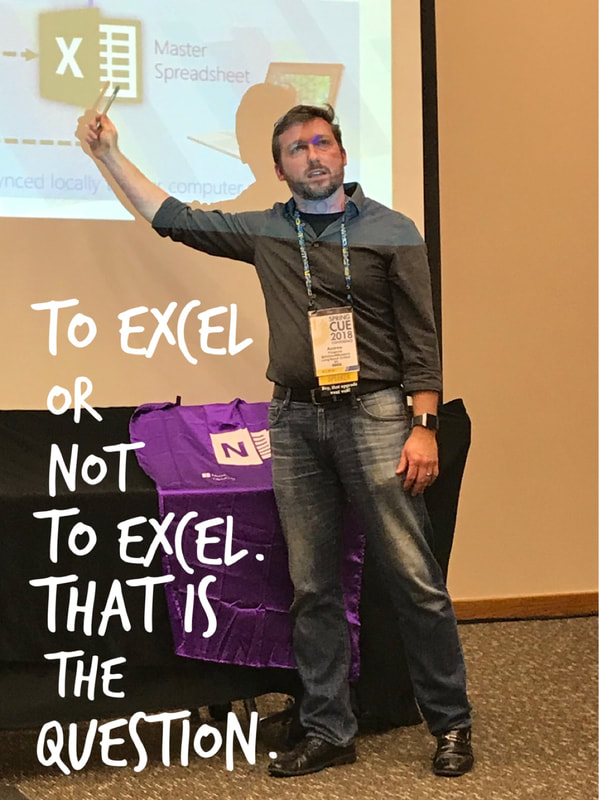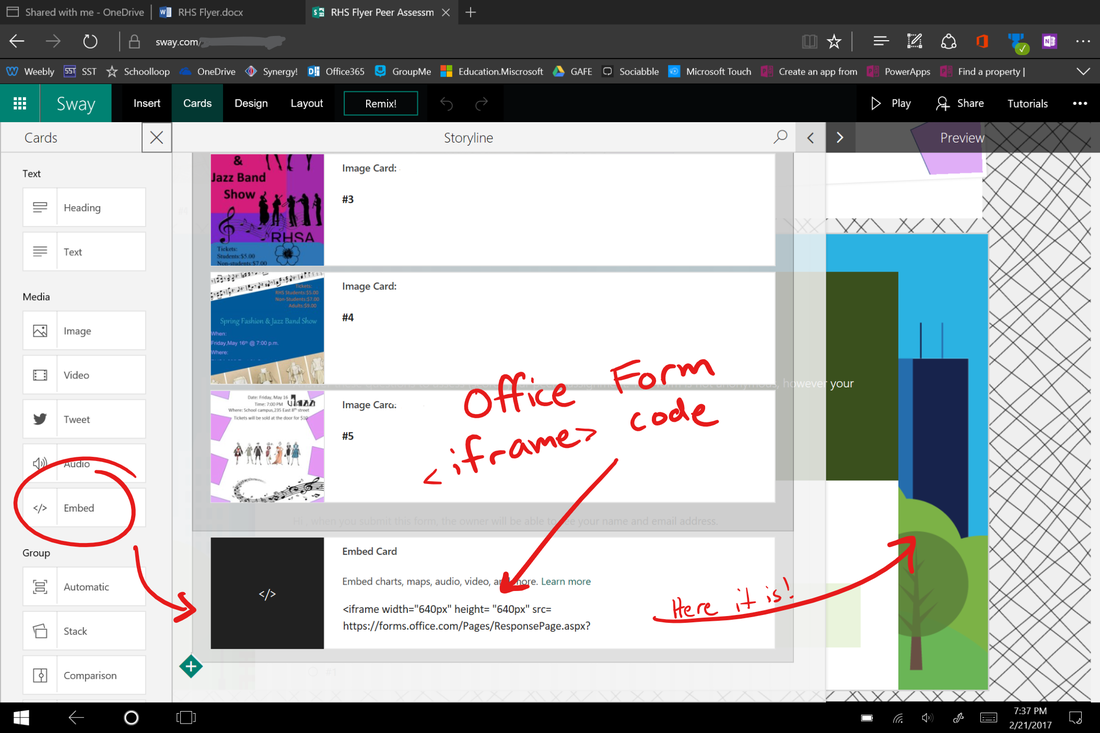It's been a week since CUE 2018. The conference was a nice break from the classroom. It's not that I don't enjoy teaching my students ( I do), but getting away allows me to reflect on the current state of #edtech and brainstorm on how to use up & coming useful technologies. Usually this time is reserved for late at night, but lately I find myself choosing sleep more often than not. Anyways, the point is I get some distraction-free thinking time. Here are some thoughts:
#OneNoteEdu - Tammy Dunbar and I gave a 3 hour Office 365 workshop, and I put together the section on OneNote. I've come to the conclusion that there is never enough time to discuss OneNote. There is just too much to talk about. Attendees need to understand the organizational structure of a OneNote notebook and the power of the page. Immersive Reader, embeds, math, tables, ink, researcher, printing and sharing, and then there are all the basics too. And if that wasn't enough, Classroom Notebooks take it all to a new level of pedagogical thinking, planning, and designing. I showed off a lot of examples of how I'm using Class Notebooks to share content, organize everything digital in my classroom, and implement learning activities with my students. It's pretty crazy how one software program can be used in so many various ways, be it for independent or collaborative student learning. At the same time, since OneNote is my classroom hub for practically everything, I don't have to teach new routines for other apps or online services. When my students come into the classroom and see that they're using iPads, they don't ask "what do we do?", they just automatically open OneNote, log in, and open our Class Notebook. I like this. It saves me time.
I digress though. Explaining all the ins and outs of a Class Notebook is also a big challenge. There is distributing and reviewing work, LMS integration, creating collaborative sections, creating groups for differentiated page distribution, the process of setting up a Class Notebook, and the permission levels associated with the three main sections. It's a lot to digest in such a short amount of time, and it's a lot to try to explain in such a short time too.
Power Bi - I gave my Power Bi session again. This was my third time, and I still haven't figured out a cool catchy name for my session title yet. I had a bigger audience this time. My session resource link (available at the session) was pinged 91 times that day (yay!). Maybe this whole what-are-we-going-to-do-with-all-this-student-data-and-how-are-we-going-to-manage-it idea is starting to catch on. It also helped to have a good location for the session as well 😉 Lots of people were interested, and there was a collective "wow" when I demonstrated manipulating a chart on students' success rate with multiple ELA anchor standards to show me the data based by grade level, class section, and both. I received some complements for my session at the end, before everyone was rudely kicked out by the convention staff.
FONBME - This is a take on FOMO (Fear of Missing Out). I call this Fear of Not Branding Myself Enough. There is just so much of it going on, and I don't know how to react to it. Should I do it too? I imagine it's time consuming, having to create a fancy acronym, write blog posts for every little thought, and having to attach myself to Twitter more than ever. I'd rather spend time this time with my family and on my students' learning. I like to create, innovate, and problem solve. This takes time. Time away from branding I guess. Oh well.
AR & VR - CUE has a nice little virtual reality playground for attendees to play around the latest devices (except for Microsoft's mixed reality headsets 😕). I'm still trying to put my finger on this for the music classroom. Yes, there are use cases for the historical part of music education, but I'm still trying to figure out how AR/VR could be used to help students understand and grasp the basic music concepts I teach in middle school. I already accomplish this without AR/VR, but does it have something to offer that makes it pedagogically worthwhile? I still don't know. Honestly I don't have a device to play around with and test, but that's not the real issue. I know what works in my classroom. I know how to design my resources and activities so that my students learn in my classroom. I want to (try to) do the same with VR. I want to be able to create a VR experience tailored exactly the way I want it for my students (TPK and TCK), except I don't know how to design for VR yet. During a discussion I had with one of the VR experts, I did learn about WebVR though, which I'm told is where everything is headed. Imagine if teachers had easy tools to create worthwhile VR/AR experiences for their students that could incorporate permission levels from the cloud, like a VR/AR classroom that adapts for every student. That would be cool. Make it happen Microsoft.


















 RSS Feed
RSS Feed
